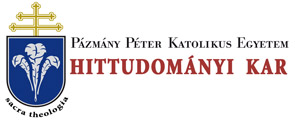Folia Theologica 21. (2010)
Barbour Hugh O.Praem.: The Cosmology of Catholic Communications: Postmodern Kerygma? A Reflection by a Disciple of SS. Albert the Great and Thomas Aquinas
152 Hugh BARBOUR sign: the appearance of a new star in the firmament. Jesus is compared hy ancient Christian writers to a new sun. According to current astrophysical knowledge, we should compare it with a star that is even more central, not only for the solar system but also for the entire known universe. Within this mysterious design simultaneously physical and metaphysical, which led to the appearance of the human being as the crowning of Creation's elements Jesus came into the world: "born of woman" (Gal 4: 4), as St Paul writes. The Son of man himself epitomizes the earth and Heaven, the Creation and the Creator, the flesh and the Spirit. He is the centre of the cosmos and of history, for in him the Author and his work are united without being confused with each other.3 The meaning of the star of Bethlehem, a heavenly body with a miraculous character, is the occasion of these assertions of the pope regarding the place of Christ in the cosmos. He affirms clearly the continuity between the physical and the metaphysical orders crowned by the centrality of Christ, whose human body and divine person make him the actual and not only figurative center of the cosmos. All the cosmic realities considered in science, ancient or contemporary, are governed and understood in His light. He is the summary, the epitome, of all things created and uncreated in their orders, distinct and unconfused, but linked in a continuous order in which spiritual and bodily realities are understood in terms of each other. This star is a cosmological sign, and an advertisement as it were, of the true and heavenly Body of God, the firstborn of all creation, born of woman, the one who draws all things to Himself. Note that the pope points out that in Christian tradition the cosmos is a "book" in which are read the designs of God. The book, this most original and ancient instruments of the media of communications was the favored image of St. Augustine in describing the sense of created things apprehended by the human intellect and will in their relation to their original ideas found in God the Word. Indeed, the stars of the firmament in his explanation of the Hexameron in Genesis are for Augustine the sacred scriptures of the Bible, and he was not ashamed to consult these books for the efficacious movement of grace in his own life as the astrologers did the stars themselves as forces of nature. Indeed, such a fortuitous consultation was the graceful instrument of 3 http://www.vatican.va/holy_father/benedict_xvi/homilies/2009/documents/hf_b en-xvi_hom_20090106_epifania_en.html
